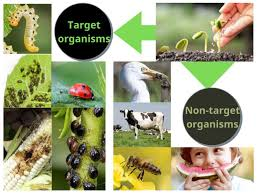Africa, a continent with vast agricultural potential, has long struggled with pest-related crop losses, threatening food security and economic stability. Traditional pest control methods, such as chemical pesticides, have been widely used but have significant drawbacks, including environmental pollution, human health risks, and the development of pesticide-resistant pests. In recent years, nanotechnology has emerged as a promising solution for pest control in African agriculture, offering a more efficient, sustainable, and environmentally friendly approach.
The Challenges of Pest Control in African Agriculture
African agriculture faces significant challenges from pests, including insects, weeds, and diseases, which can cause crop losses of up to 50%. The use of chemical pesticides has been the primary method of pest control, but this approach has several limitations. Chemical pesticides can harm beneficial insects, contaminate soil and water, and pose health risks to humans and animals. Moreover, the overuse of chemical pesticides has led to the development of pesticide-resistant pests, making them less effective.
Nanotechnology-Based Pest Control: A New Paradigm
Nanotechnology, the manipulation of matter at the nanoscale (1-100 nanometers), has opened up new avenues for pest control in African agriculture. Nanoparticles, tiny particles with unique properties, can be engineered to target specific pests, reducing the harm to beneficial organisms and the environment. Nanotechnology-based pest control methods include:
- Nano-insecticides: These are nanoparticles that can be used to control insect pests. For example, silver nanoparticles have been shown to be effective against a range of insect pests, including mosquitoes and ticks.
- Nano-herbicides: These are nanoparticles that can be used to control weeds. For example, nanoparticles of iron oxide can be used to control weeds by inhibiting their growth.
- Nano-fungicides: These are nanoparticles that can be used to control fungal diseases. For example, nanoparticles of copper oxide have been shown to be effective against fungal diseases such as powdery mildew.
Benefits of Nanotechnology-Based Pest Control
Nanotechnology-based pest control offers several benefits over traditional pest control methods, including:
- Targeted pest control: Nanoparticles can be engineered to target specific pests, reducing the harm to beneficial organisms and the environment.
- Increased efficacy: Nanoparticles can be designed to have a higher surface area, increasing their efficacy and reducing the amount of active ingredient required.
- Reduced environmental impact: Nanoparticles can be designed to be biodegradable and non-toxic, reducing the environmental impact of pest control.
- Improved crop yields: Nanotechnology-based pest control can help to reduce crop losses and improve yields, contributing to food security and economic stability.
Case Studies of Nanotechnology-Based Pest Control in African Agriculture
Several case studies have demonstrated the effectiveness of nanotechnology-based pest control in African agriculture. For example:
- Nano-insecticides for malaria control: Researchers in South Africa have developed nanoparticles that can be used to control mosquitoes, the primary vector of malaria.
- Nano-herbicides for weed control: Researchers in Nigeria have developed nanoparticles that can be used to control weeds in maize fields, reducing the need for manual weeding and herbicides.
- Nano-fungicides for disease control: Researchers in Kenya have developed nanoparticles that can be used to control fungal diseases in tea plants, reducing the need for chemical fungicides.
Challenges and Opportunities for Nanotechnology-Based Pest Control in African Agriculture
While nanotechnology-based pest control offers several benefits, there are also challenges and opportunities to be addressed. These include:
- Regulatory frameworks: There is a need for regulatory frameworks to be developed to govern the use of nanotechnology-based pest control in African agriculture.
- Public awareness: There is a need for public awareness campaigns to educate farmers and consumers about the benefits and risks of nanotechnology-based pest control.
- Capacity building: There is a need for capacity building to support the development and commercialization of nanotechnology-based pest control products in Africa.
- Partnerships and collaborations: Partnerships and collaborations between researchers, policymakers, and industry stakeholders are essential for the development and deployment of nanotechnology-based pest control solutions in African agriculture.
Conclusion
Nanotechnology-based pest control offers a promising solution for African agriculture, providing a more efficient, sustainable, and environmentally friendly approach to pest management. While there are challenges to be addressed, the opportunities for nanotechnology-based pest control in African agriculture are significant. By harnessing the power of nanotechnology, African farmers can improve crop yields, reduce pest-related losses, and contribute to food security and economic stability. As the continent continues to develop and implement nanotechnology-based pest control solutions, it is essential that policymakers, researchers, and industry stakeholders work together to ensure that these solutions are safe, effective, and accessible to all.

